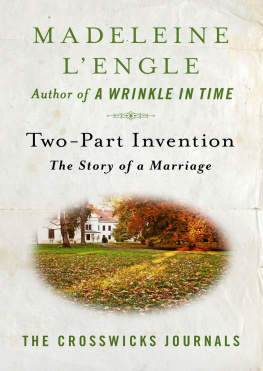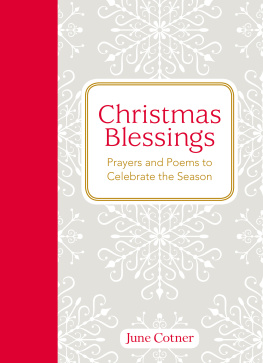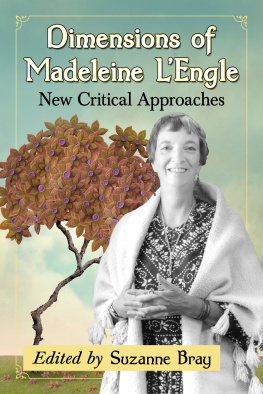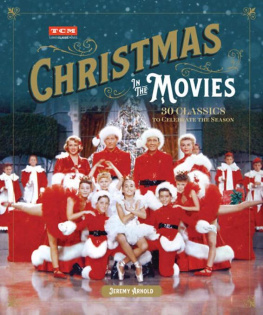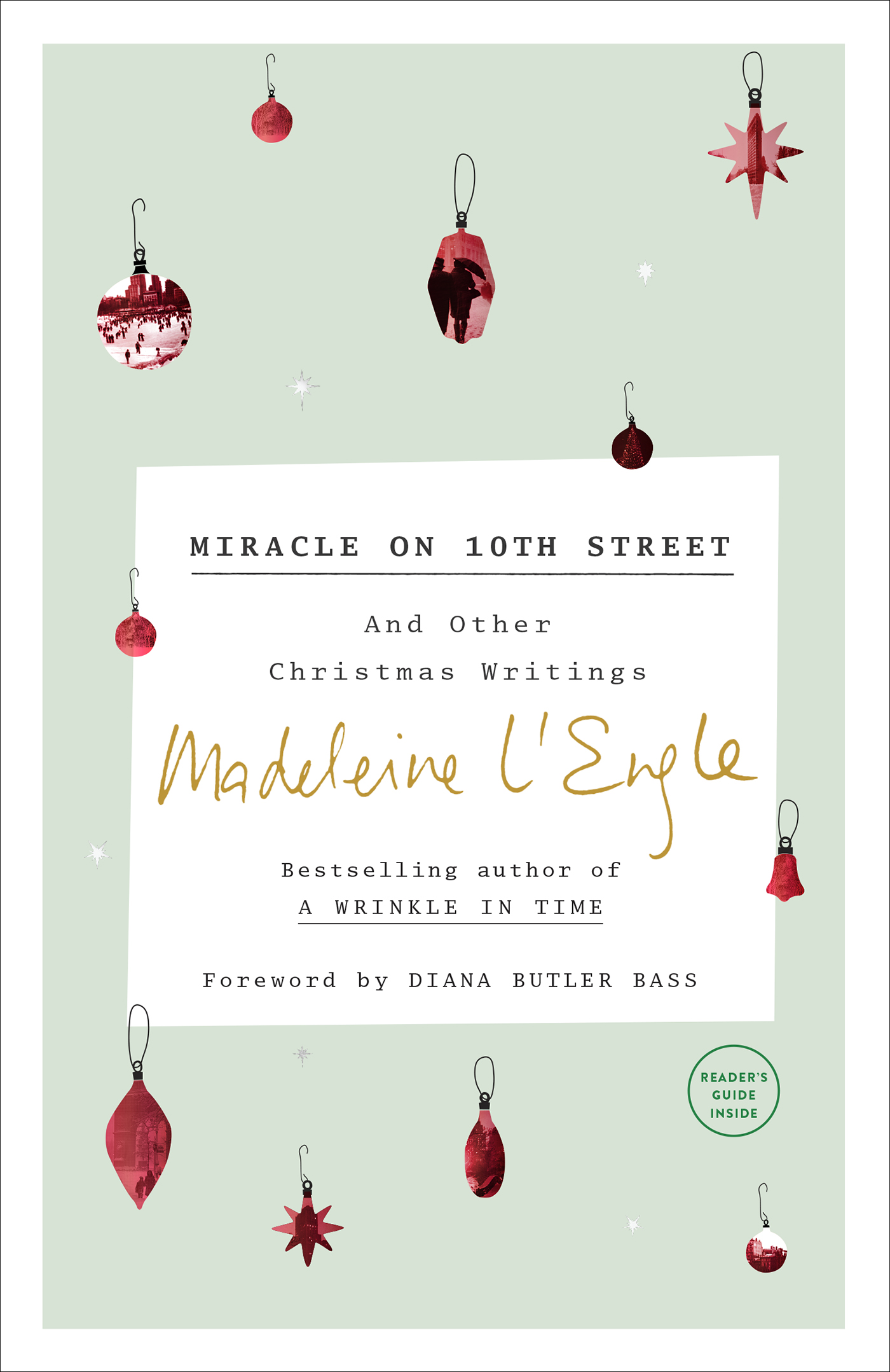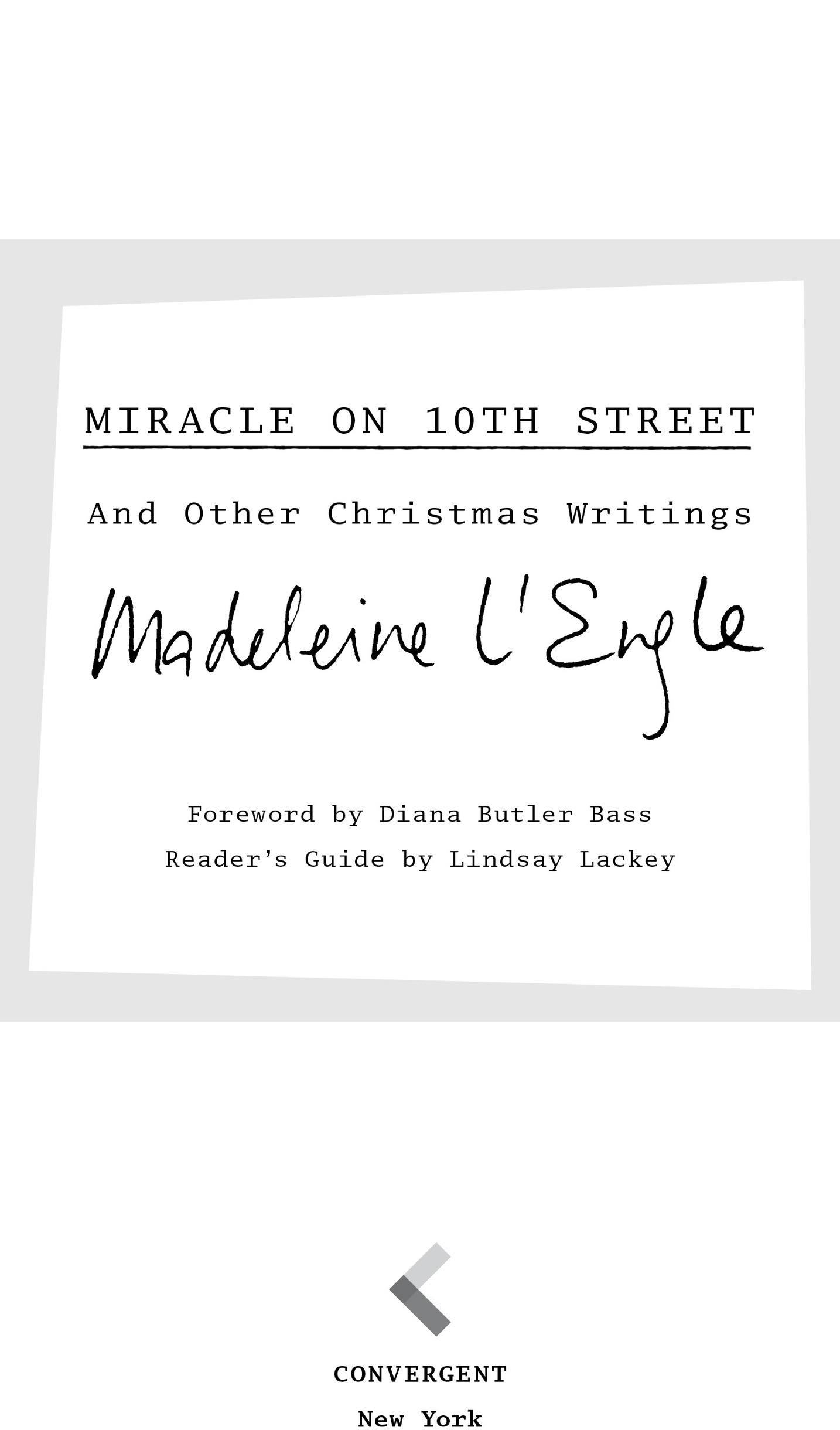Contents
Landmarks
Print Page List
Copyright 1998 by Harold Shaw Publishers
Foreword copyright 2019 by Penguin Random House LLC
Readers Guide copyright 2019 by Penguin Random House LLC
All rights reserved.
Published in the United States by Convergent Books, an imprint of Random House, a division of Penguin Random House LLC, New York.
crownpublishing.com
CONVERGENT BOOKS is a registered trademark and its C colophon is a trademark of Penguin Random House LLC.
Originally published in hardcover and in slightly different form in the United States by Shaw Books, an imprint of Waterbrook, a division of Penguin Random House LLC, in 1998.
Some previously published pieces have been shortened, reformatted, retitled, or in other ways altered in order to suit the nature of this book. The reader may wish to note that some of Madeleine LEngles selections included here contain ideas also appearing in The Irrational Season.
Portions of this book have been previously published in Wintersong: Christmas Readings by Madeleine LEngle and Luci Shaw. Copyright 1996 by Harold Shaw Publishers.
All Scripture quotations, unless otherwise indicated, are taken from the King James Version of the Bible.
Permissions credits are located on .
ISBN9781524759322
Ebook ISBN9781524759339
Book design by Andrea Lau, adapted for ebook
Compiled by Lil Copan and Miriam Minderman
Cover design: Jessie Sayward Bright
Cover images: (New York City scenes) Bridgeman Images
v5.4
ep
Contents
Although this collection of seasonal writings is named Miracle on 10th Street after one of its pieces, an alternative title easily could be Observe and Contemplate. In these pages, Madeleine LEngle captures the spiritual heart of Christmasan invitation to gaze into the miraculous presence of God in and with and through the world.
Miracle on 10th Street testifies to the Incarnation not with difficult theological words or philosophical arguments, but with the sort of poetry readers of Madeleine LEngle surely expect. But something else happens in this collection as well: LEngle does not merely explain the Incarnation, but she actually guides us into it with the skill of a spiritual director and the insight of a mystic. In her poem Loves incarnate birth, she invites us to Observe and contemplate. Make real. Bring to be.
Over the years, much has been made of LEngles deep affection for the Christian understanding of Incarnationthe belief that Jesus was born as God in fleshthe theological touchstone of the church seasons of Advent, Christmas, and Epiphany. Indeed, the Incarnation is often mentioned as the foundation of Anglican spirituality, the religious tradition that shaped LEngles life as a member of the Episcopal Church. Anglicans are best described as a Christmas people, those whose faith and devotion witness to Immanuel, God-with-us, the incarnate Love in the world. That presence can be discovered in all creaturesthe great and the smalland in each home and hearth and in every field and forest. A Christmas people are not particularly interested in a distant or regal God. Instead, the emphasis is on with-ness, a quotidian God. The Incarnation draws the heart toward finding the divine everywhere and at all times. Those formed in this spirit trust that the everyday world is sacred. Anglicanism believes in a king who finds a stable and manger the most suitable of birthplaces, and who fetes his friends by serving up a simple meal of bread and wine. This is, more than anything else, a homey faith, a spirituality of humanness and hospitality.
This is the very thing we do not do in Decemberwith the busyness of the days and an almost dulled familiarity with the holiday. We have come to take Christmas for granted. In a sense, we are all like Sister Egg, the nun in the short story Transfiguration, who cannot explain to a homeless man why Christmas should be merry. We have lost its language, its mystery. We have forgotten how to see this season, one shaped by the paradoxes of dark and light. But LEngle never scolds or chastises readers to remember the true meaning of Christmas. Instead, she calls us to attend and reflect upon the commonplace of December days. Go beyond the planning and parties and presents and even the church services. Go deeper, pay attention: Observe and contemplate.
The entire season from Advent through Epiphany is, in effect, an invitation to mindfulness. Winter gives us the opportunity to see the structure of the world more clearly, in the same way practicing mindfulness does. I am not sure if the word mindful was readily available to LEngle in the 1970s and 1980s when most of these selections were written. As I read these pages, however, the phrase a mindful Christmas wormed its way into my imagination. For, despite the currency of the term (and my fear that LEngle might eschew the term as jargon), these essays and poems draw us to a new awareness of holiness all around, and bid us to wonder. Could we truly experience Christmas mindfully, living this holy season attentive to the presence of God-with-us? Can we practice Incarnation?
Practice Incarnation. What an amazing possibility! To this, Madeleine LEngle brings her prodigious spiritual imagination and storytelling power. Her vision of Incarnation is not merely a moments wonder at the baby in the manger. Rather, Incarnation extends from the smallest particle of physics to the splendor of the universe. It is the presence of Love that created the cosmos, and came to dwell with us. We encounter it in prayer and silence; we encounter it in joy and pain. The mindfulness of this season is not an escape from words, but wrestling with the Word that inhabits the world in its radiant beauty and, most surprisingly, even its maddening injustice.
We awaken to the enfleshed God by grasping the three spiritual elements of the Christmas storythe vast and cosmic; the intimate and homey; and the invisible and hidden. In the pages that follow, there are paeans to galaxies and stars, glory, angels, seraphim, and all of creation. However, for LEngle, this is not a distant wonder, but the stars themselves interweave with the most intimate of all human experienceschildbirth. Why? Because the same creative powerLovemakes both galaxies and babies. Incarnation teaches that all is of a piece.
All is of a piece is the heart of mystical experience. Too often, we think of mysticism as a way to abandon the world. But the greatest practitioners of mystical spirituality know that it actually moves us back into the world. In this book, Madeleine LEngles luminous prose directs us toward mundane things: preparing for a holiday feast, struggling with fears of illness and death, worries of injustice and war, jury duty, bad weather, and memories of childhood and of parents who have passed away. In all these spaces, God shows up, unexpected and sometimes uninvited, and even the most improbable moments turn toward the hope of rebirth. God is present from cosmic expanse to the chambers of our hearts, but we do not notice because the sacred is obscured under our distractions, fears, and despair. We need to look again. Observe and contemplate




